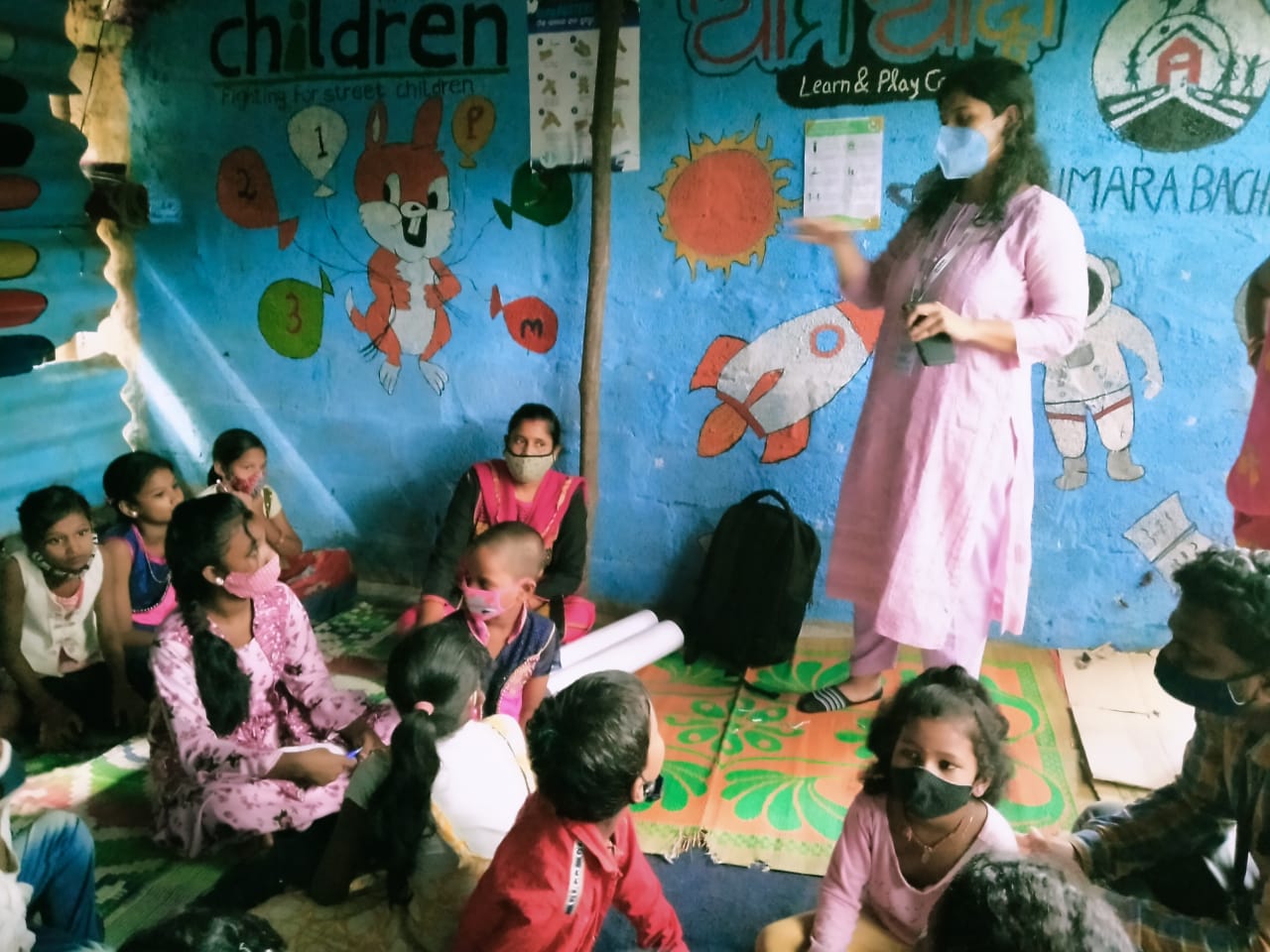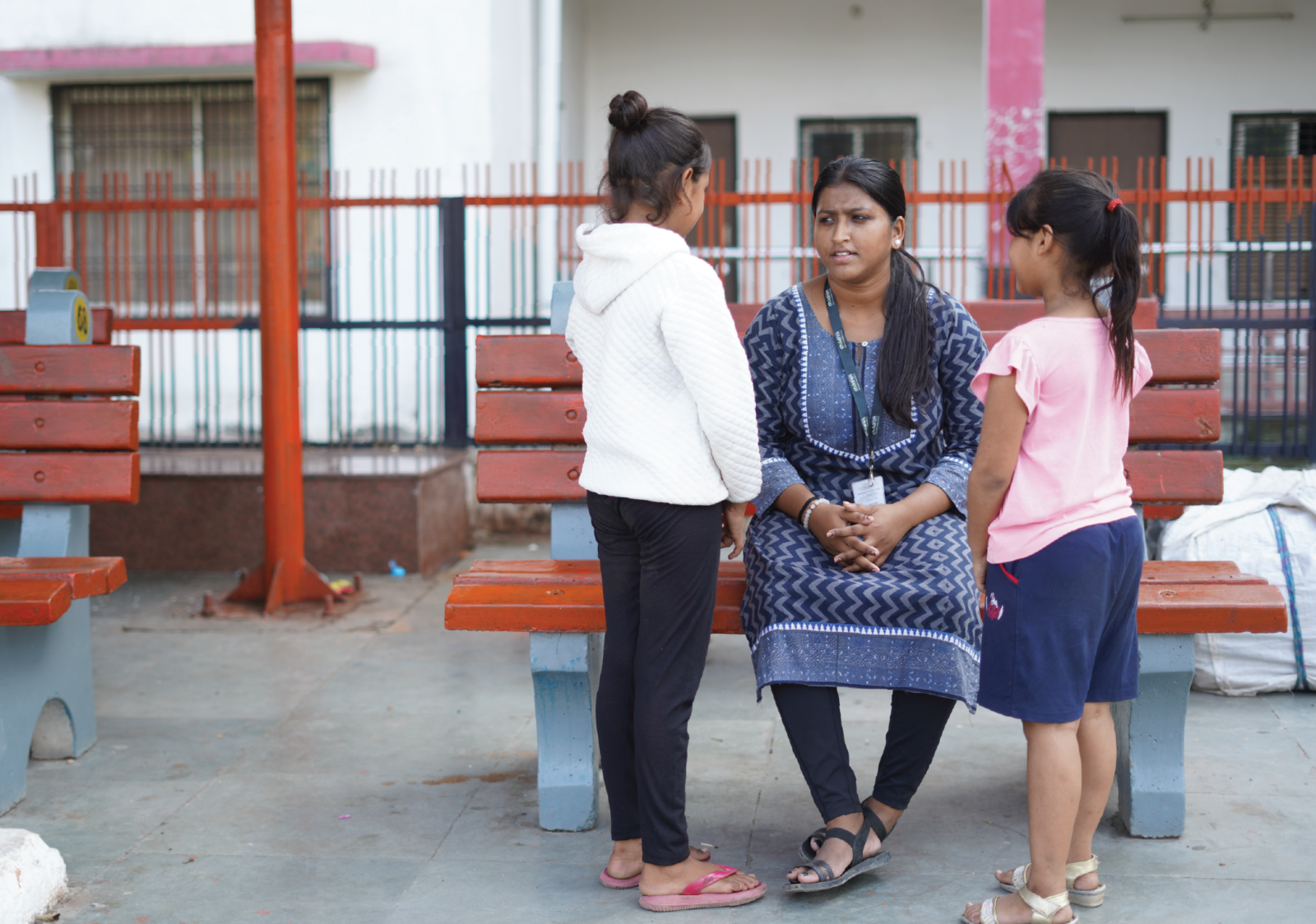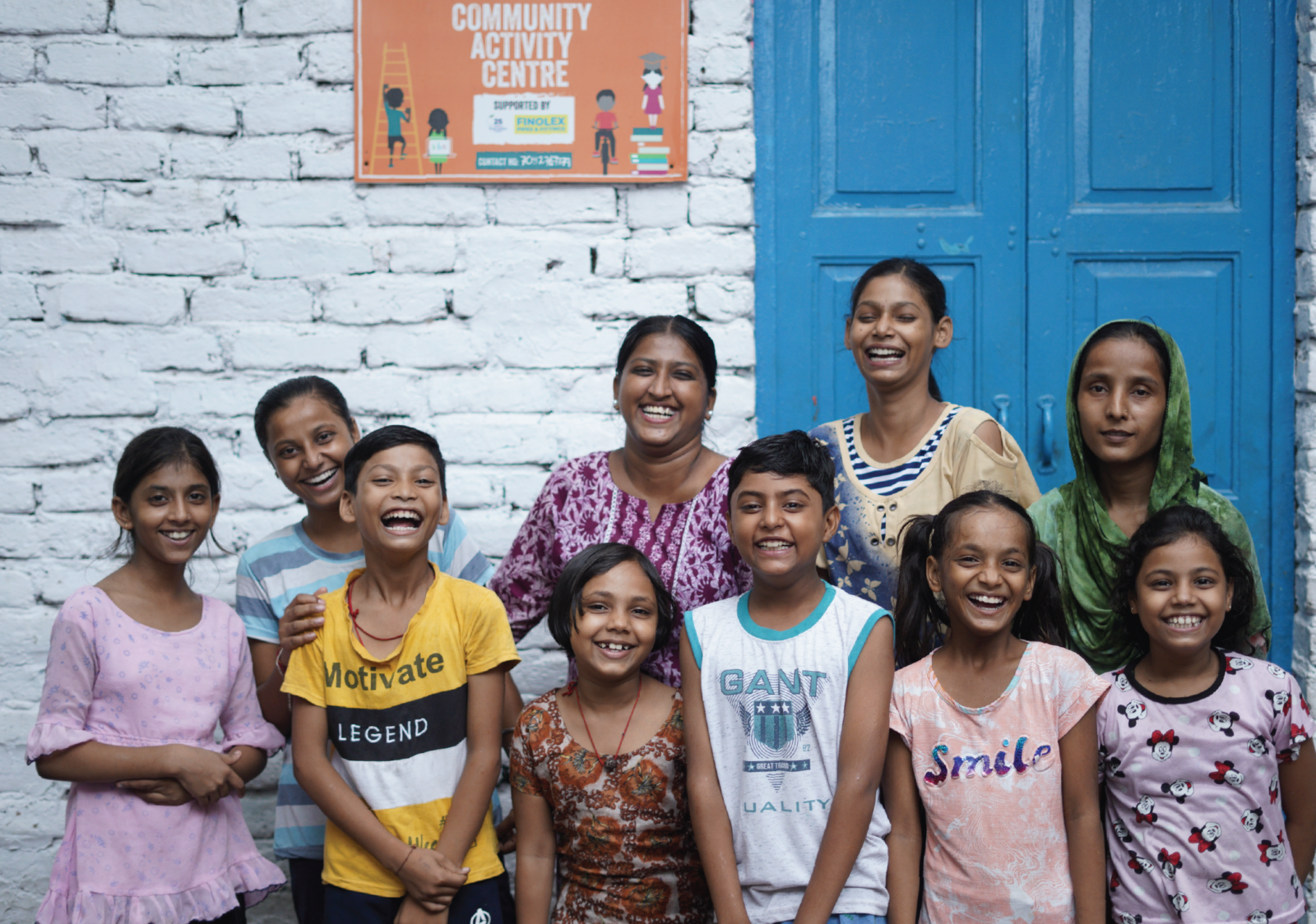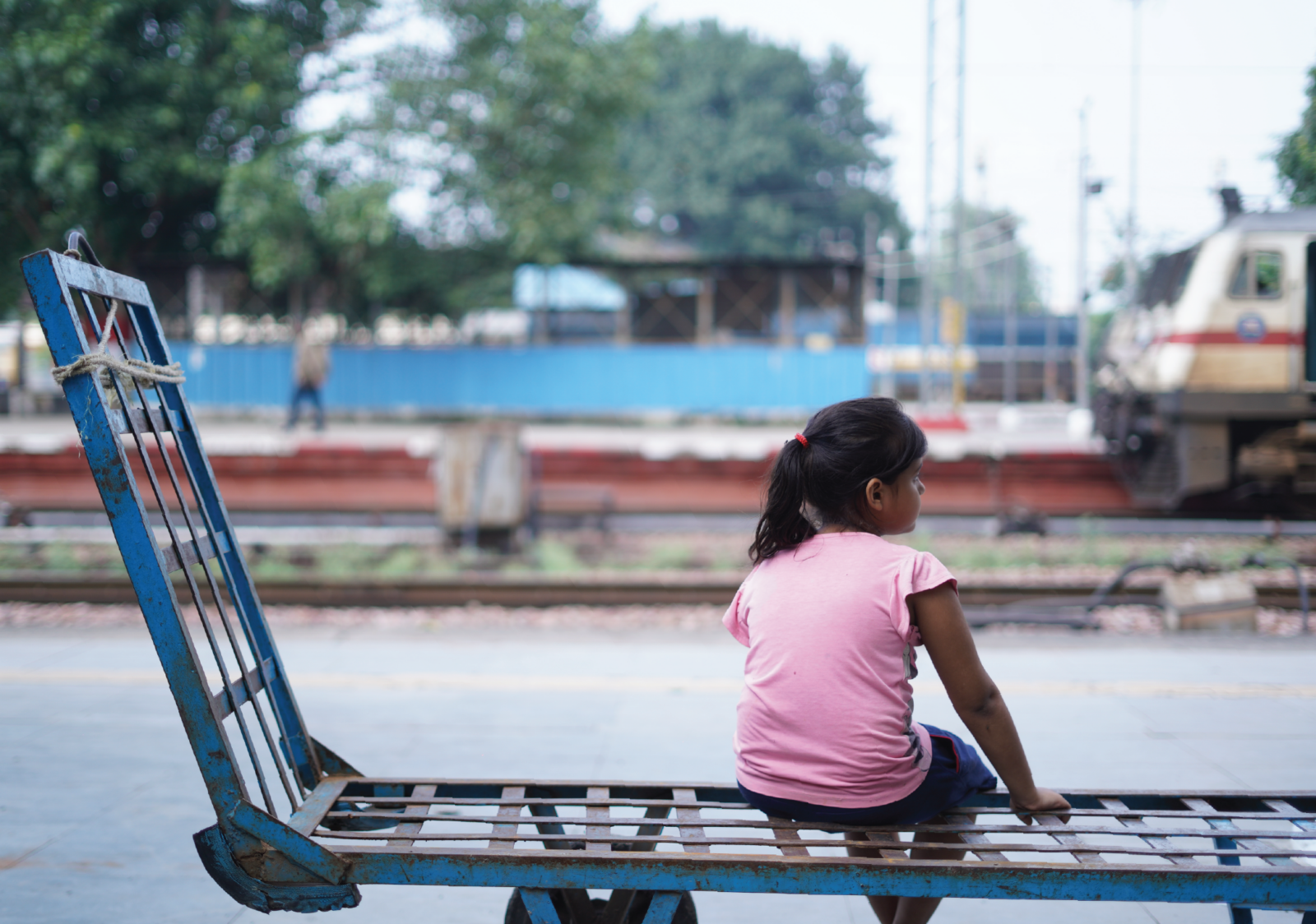“Apart from serving the communities with essentials, we began responding to the health crisis since this wave posed a bigger threat to their health,” says Debashree Dutta, Programme Manager at Railway Children India (RCI).
In this insightful interview, Debashree talks at length about RCI’s adaptations to our outreach programs within the communities, the many challenges faced by adults and children in Raipur, Darbhanga, Salem, and Bhubaneswar, and the on-ground impact of RCI’s Protection Kits on the communities.
1. The second wave of Covid-19 was unexpected, multiplying some of the already existing problems of low-income communities. What is Railway Children India’s (RCI’s) focus for Covid-19 relief for children, and how has the organization adapted to changing times?
RCI has been carrying out its eponymous operations at railway premises, where our focus was on children lost at the railway stations, their care and protection. However, with the unexpected Covid-19 outbreak, we changed our strategy within no time. Our team did not wait to take the pulse of the situation or acquire funding. Since the funding organizations, then, were also taking cognizance of the situation and were responding accordingly, RCI made use of all the available resources and funds and responded proactively.
Last year, we worked on many socioeconomic issues of the communities around the railway stations since the first wave did not have as many health implications as socioeconomic implications. We saw that people in the communities did not even have the required documents to avail the Government schemes. Accordingly, we rolled out our intervention, whereby we provided the families with cooked meals, dry ration, and helped them secure all the necessary documents.
We had only begun feeling confident and more hands-on about our relief measures, with the communities responding and the situation of the country improving in general, when the second arrived.
In this wave, we have taken our outreach measures a notch higher. Apart from serving the communities with essentials, we began responding to the health crisis since this wave posed a bigger threat to their health.
Despite not having a background or history of working in the public health sector, we confidently contributed to the existing health structure, helping it align with the community’s needs. That’s what I would say has been RCI’s change or adaptation in response to the issues of the low-income communities.
2.Please elaborate on how RCI has responded to the overwhelming health crisis in the communities.
We began with checking whether people in the communities are getting vaccinated or are at least registering for the vaccination drive. Next, we checked whether they are following all the Covid-related protocols, particularly those based on the new symptoms characteristic of the second wave.
To ensure maximum vaccinations in the community, we began by clearing the myths around vaccinations and spreading awareness. Since the Covid-19 situation had improved around later last year, people in the communities began believing that Covid was history and that they can resume living their lives as they did earlier. Accordingly, we focused our attention around busting this myth.
While hygiene had become the topmost priority for everyone in the country, it still wasn’t a priority for people in these communities. Also, the people couldn’t practice hygiene because they couldn’t afford to, and because of lack of resources. Add to that, the struggle to survive was still a reality.
Followed by our awareness program and our health assessment of the communities, we progressed to distributing hygiene kits. These kits comprise sanitizers, soaps, hand wash, toothpaste, sanitary napkins, and even an immunity-boosting powder. With the distribution of these kits, we aim to keep the children and the adults safe and protected until they can take the vaccine. The distribution began around the first week of May, this year, and will continue until we reach every family in the community.
Additionally, we collaborated with the state health departments, where they recognised us as health volunteers. In this role, we helped the department reach the communities, get them tested and vaccinated.
We also set up help desks within the communities to serve their various needs. The help desk functions in spreading awareness and protecting the community against misinformation about the vaccine. This is very important since they are not able to differentiate between real and fake news. At the help desk, we also get people registered for vaccination. We provide support to families; in case any member of their family is suffering from any symptoms, we help them get tested and educate them about the home quarantine system. If they show severe symptoms, we also link them to hospitals.
Currently, this encapsulates all of our on-ground work in the communities.
3.As Programme Manager overseeing relief work across three states Chhattisgarh (Raipur), Bihar (Darbhanga), and Tamil Nadu (Salem). What would you say are the commonalities and differences in the impact of Covid-19 on childhoods across these three locations?
If we compare last year’s Covid-19 impact to that of this year’s, capital cities like Delhi, Mumbai, Chennai, Kolkata were largely affected, last year, while 2-tier, 3-tier cities did not feel the strain as much. The media focus was also on the major cities. I’ll share my experience of Bhubaneswar, too, since I recently began overseeing work there.
Capital cities like Bhubaneswar and Raipur were in the process of preparing for the second wave, owing to their experience from the last year. However, cities like Salem and Darbhanga weren’t impacted much last year, which is why they weren’t serious about the situation, this year.
If I were to give an example, in Raipur, as soon as a spike in the number and severity of cases was noted, the authorities announced a strict lockdown. Moreover, they gave a week’s time to the locals to prepare for the lockdown, which allowed us also to go and make people aware of the lockdown and prepare them. Now, this is important because the intention and proactivity of the authorities trickle down to the communities.
In states like Bihar, though, the communities are vulnerable, but they are less serious about the situation.
The challenge in Salem is that communities are hesitant to accept that the symptoms they are facing may be those of Covid-19 and not general flu.
So, our challenge in Salem is to make aware of the severity of the virus. However, I must add that the severity in the community is driven by that of the district authorities.
In Bhubaneswar, the district authorities are quite sensitive to the needs of the communities. They have ensured vaccination even in the remotest parts of the cities and that reflects in their controlled cases.
If I were to talk about the commonly recurring factors in each of these locations, those would be the suffering of the daily wage labourers and their families and the glaring digital divide.Whether it’s a partial or a complete lockdown, small businesses face the brunt of it all, and that impacts the daily wage labourers the most. As for the digital divide, it was prevalent last year and continues this year too. Many children from these communities do not have access to a smartphone or even the internet, for that matter. As a result, they are missing out on learning and education completely.
Also, this situation requires people to stay indoors. Now, families of 6-7 members are cooped up in very small homes in a very hot, uncomfortable environment. This setup is proving to be a challenge for the children.
Nutrition is another area of concern. While earlier children had the access to mid-day meals, with the aanganwadi workers posted in Covid-19 duties, that too has stopped for children. Going forward, one of the ripple effects of Covid-19 is going to be increased malnourishment in children.
4.How different is 2021 from 2020 with respect to the impact of the pandemic on the communities’ children?
Last year, we looked at the Covid-19 impact on children from a psychosocial perspective. Their mental health was rightly prioritised, which remains a priority even today. Also, we were hopeful, last year, that the situation for children may improve this year. However, the second wave has made things worse for them.
As I mentioned, it will be two long years that children haven’t received adequate nutrition. Naturally, malnourishment is going to sink deep in our society.
The immunisation drive for children aged between 1 to 10 years has halted, too. As a country, we had gained some success in immunising our children, but this halt may now put more children at risk.
For the same two years, education has halted for many children. Due to this, our efforts of enrolling children in schools with the help of campaigns such as Sarva Shiksha Abhiyaan has been completely forfeited.
In terms of the increase in cases of child sexual abuse and trafficking of children, particularly girls, last year such cases were mostly concentrated in Southern India. This year, however, there’s an influx of cases pan-India. I read an article written by Kailash Satyarthi, where he stated that his organization ran a helpline number. This year in a single month, that number received 350 child protection violation cases. That’s a huge number for a month!
Plus, the lack of vaccination trials among children is another huge source of concern. With children having stayed at home for over two years, scientists have expressed their concerns about the overall reduced immunity.
5.How did the community members respond to the relief measures and RCI’s safety kits? Please share specific instances, anecdotes, voices, if any, that come to your mind.
Let me begin by sharing how or why we even thought of distributing these kits among the communities. During the awareness campaigns that we conducted in April, we realised that we need to focus most of our resources to ensure hygienic practices within the communities. As I mentioned earlier, people in these communities had to struggle for their survival each day, in such situations, hygiene wasn’t their priority at all. They have water scarcity, food scarcity, and even a lack of electricity to worry about!
We saw that with all of these issues at hand, hygiene took a back seat. This affected not only the children but also their mothers and adolescent girls in the community.
Keeping this scenario in mind, we decided to begin distributing our Protection Kits among the community. The kits include sanitizer, soap, sanitary napkins, even toothpaste to ensure the personal hygiene of every member of the family.
Our second intention or motive of distributing these kits was to reinforce the hygiene practices that we were spreading awareness about. So, along with asking them to wash their hands routinely, we also provided a resource that would allow them to practice that routinely.
As for the response from the community, they shared that many NGOs and even the Government provided them with essentials; however, nobody thought of truly empowering them with these hygiene-based resources.
So, when we went ahead with this distribution, the communities welcomed us and acknowledged the fact that our awareness was not limited to spreading the word, and that we took actions to truly empower them.
While most of them expressed their gratitude to our team, many also shared that they used to think that a sanitizer is only for the privileged. They used soaps before we distributed sanitizers, however, that practice had also stopped because of water scarcity.
They were happy to receive the sanitizers and even the reusable masks.
Although our intention was to protect the communities and spread awareness, their response was heartening and very encouraging for our teams.







